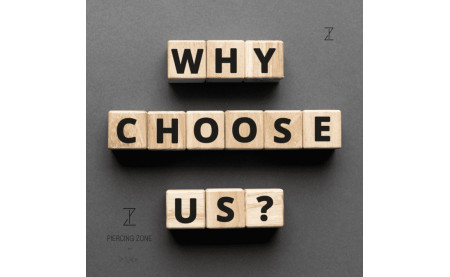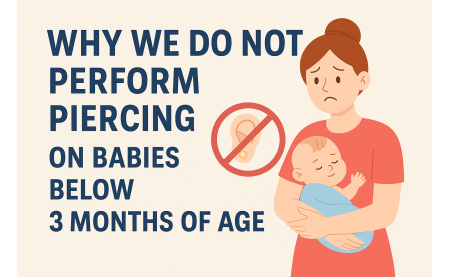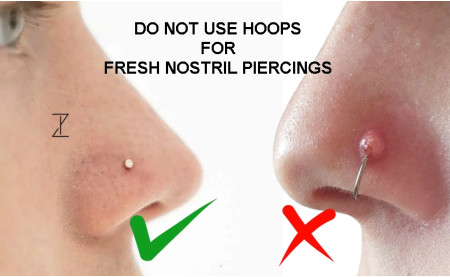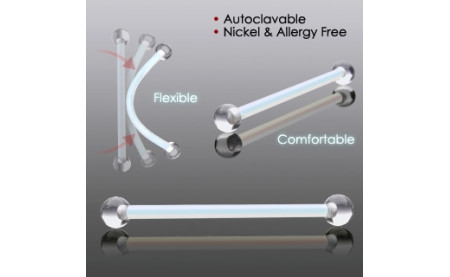When a Healed Piercing Reacts After Jewelry Reinsertion — What’s Happening & What To Do
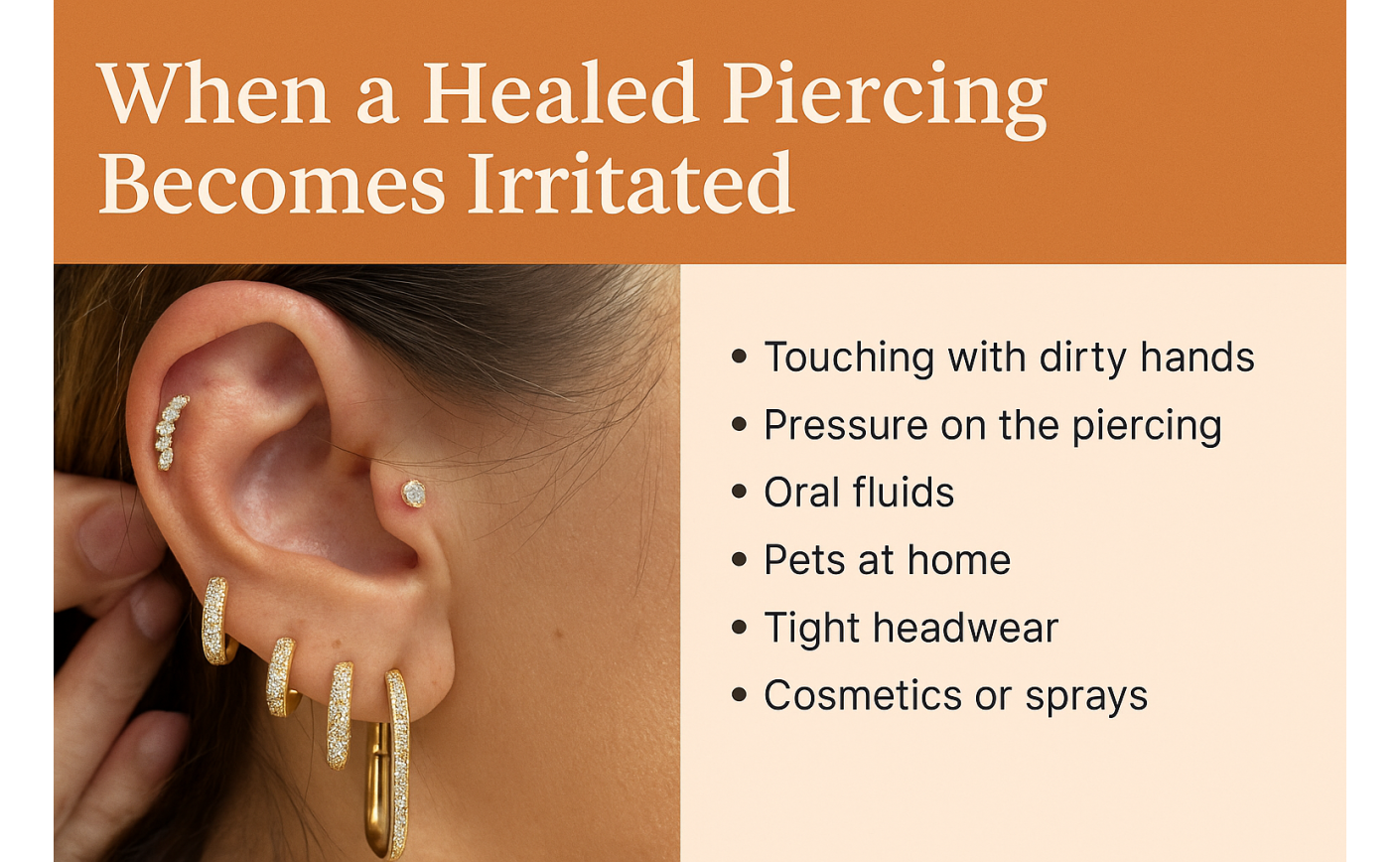
The Situation:
You had a fully healed piercing—maybe it wasn’t used for months or even a year. You came to Piercing Zone Dubai, and our professional team safely reinserted high-quality titanium or gold jewelry using proper sterilization, angle, and lubrication.
Yet, 24–48 hours later:
- It’s swollen, red, or tender
- You notice slight bruising or a bump
- It feels like a fresh piercing again
Why? If everything was done right, what went wrong?
Let’s explore the actual reasons.
Why Your Healed Piercing May Flare Up After Reinsertion
1. Dormant Tissue Reactivation
Over time, unused piercings:
- Narrow internally
- Develop fragile scar lining
- Lose the "habit" of holding jewelry
Even professional reinsertion can reawaken sensitive tissue and cause a temporary immune response—bruising, fluid, swelling.
2. Touching with Dirty Hands
This is one of the most common culprits post-visit.
❌ Repeatedly touching or twisting jewelry with unwashed hands introduces:
- Bacteria
- Dirt
- Oils
Even one careless touch can set off irritation in a reawakened piercing tract.
3. Environmental Contamination at Home
| Trigger | What It Does |
|---|---|
| Pet licking the piercing | Bacteria from saliva enters open tissue |
| Pet fur sticking to healing sites | Irritates, clogs, and contaminates |
| Hair & hair products | Sprays, colors, and conditioners can chemically irritate the area |
| Makeup & setting spray | When sprayed over piercings, blocks pores and traps debris |
| Dust & oil from bedsheets | Sleeping without a clean pillowcase can introduce unwanted microbes |
4. Pressure or Friction After Insertion
Even after careful professional reinsertion, if a client unknowingly applies external pressure, it can cause trauma:
- Belly Piercing: Playing with it, tight waistbands, or sitting for long hours
- Ear Piercing: Sleeping on it, using tight helmets, or wearing stiff Arabic headscarves
- Nostril: Pressing against face masks, wiping makeup harshly
These actions don’t infect the piercing—but they create friction and irritation, leading to swelling, redness, and even bruising.
5. Oral Fluids & Mucosal Exposure
For lip, tongue, or smiley piercings—oral bacteria remain a major concern:
- Saliva may reactivate irritation
- Kissing or oral activity shortly after reinsertion can cause flare-ups
Even with healed mucosal piercings, contact with enzymes and pH changes can affect the piercing’s balance post-jewelry reinsertion.
Summary of Additional Real-Life Causes
| Trigger | Area Affected | Why It's Risky |
|---|---|---|
| Dirty hands | All piercings | Introduces bacteria and friction |
| Pet licking / fur | Nose, ear, belly | Bacteria, allergens |
| High-waisted pants | Navel | Continuous pressure on jewelry |
| Tight helmets / scarves | Ear, helix, tragus | Friction, overheating |
| Prolonged sitting | Belly | Pinching, pressure, movement |
| Sleeping on it | Any ear piercing | Pressure + movement causes trauma |
| Makeup / sprays / setting mist | Nose, ears | Clogs and irritates pores |
| Hair dye or chemicals | Ear, tragus | Causes burns or allergic reactions |
| Playing with jewelry | Navel, nostril | Irritation, swelling, bruising |
Removal Is Not the First Step
We strongly advise not removing the jewelry without first being examined.
Removing jewelry too early can:
- Cause the channel to collapse
- Trap inflammation or pus inside
- Make reinsertion more difficult later
At Piercing Zone Dubai, we assess the issue in-studio and provide corrective steps without risking the closure of the piercing.
✅ What To Do Instead
- Leave jewelry in place
- Rinse gently with sterile saline twice daily
- Avoid all pressure, makeup, sprays, or touch
- Use cool compresses (not ice directly)
- Sleep with a clean pillowcase and avoid lying on that side
- Visit us for a professional check-up if symptoms persist
Important Reminder:
This is not a piercing failure and not an allergic reaction to materials.
It’s a natural reaction caused by tissue reactivation + environmental triggers.
Our role as professionals is to guide you through it safely—just as we did during your original piercing.
Final Note to Clients:
Even if your piercing was done years ago, don’t underestimate the sensitivity of reinserting jewelry. It may feel healed—but the tissue may not be ready for friction, pressure, or contamination.
That’s why we always educate you, and we’re here if your piercing reacts.


